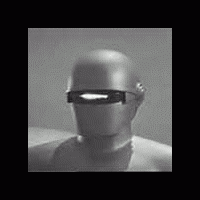Terminology for double-edge razors and blades
Leisureguy-ისა და 24 ივნისი, 2020-ის მიერ
შეტყობინებები: 2
ენა: English
Leisureguy (მომხმარებლის პროფილი) 24 ივნისი, 2020 17:33:17
I shave with a double-edge safety razor (often called a DE razor), which uses an old-fashioned double-edged blade. I would say that it uses a du-eĝa klingo and that the razor is a du-eĝa razilo. This type of razor differs from a du-klinga razilo (e.g., the Gillette Sensor) — and likewise differs from a kvin-klinga razilo (e.g., the Gillette Fusion) or a sep-klinga razilo (!) like the Dorco Pace.
However, at least one experienced Esperantist strongly advises that a standard DE razor be termed a du-klinga razilo rather than a du-eĝa razilo. (He seems to have the idea that a double-edge blade is made by fusing two separate blades, which is not the case.)
My view is that there are indeed du-klingaj raziloj (the Sensor being one), but a DE razor uzas nur unu klingo, kiu havas du akrajn eĝojn. This is important, because single-blade razors are a distinct category, comprising straight razors (UK: cutthroat razors), single-edge razors (like the GEM), and double-edge razors, and that these are quite different from multiblade razors (Sensor, Mach 3, Fusion, Pace, et al.).
Still, I'm a novice Esperantist, and I am still learning. I do not, however, believe that a double-edged dagger or sword would be said to be du-klinga, but rather du-eĝa. Thus I would think a razor that uses a single blade with two sharp edges would be a du-eĝa razilo and not du-klinga (precipe ĉar ĝi havas nur unu klingon). I suppose it comes down to distinguishing a klingo from an eĝo and recognizing that one klingo might have two cutting eĝoj.
However, it may be that a tranĉilo like an izmel is said to have du klingojn and not mereely du eĝojn.
This perhaps matters more to me than to many, since I use a DE razor daily. I have not found the usage in the wild, so I am asking for any references to common usage.
Do: a standard DE safety razor that uses a double-edged blade: du-eĝa razilo? aŭ du-klinga razilo?
However, at least one experienced Esperantist strongly advises that a standard DE razor be termed a du-klinga razilo rather than a du-eĝa razilo. (He seems to have the idea that a double-edge blade is made by fusing two separate blades, which is not the case.)
My view is that there are indeed du-klingaj raziloj (the Sensor being one), but a DE razor uzas nur unu klingo, kiu havas du akrajn eĝojn. This is important, because single-blade razors are a distinct category, comprising straight razors (UK: cutthroat razors), single-edge razors (like the GEM), and double-edge razors, and that these are quite different from multiblade razors (Sensor, Mach 3, Fusion, Pace, et al.).
Still, I'm a novice Esperantist, and I am still learning. I do not, however, believe that a double-edged dagger or sword would be said to be du-klinga, but rather du-eĝa. Thus I would think a razor that uses a single blade with two sharp edges would be a du-eĝa razilo and not du-klinga (precipe ĉar ĝi havas nur unu klingon). I suppose it comes down to distinguishing a klingo from an eĝo and recognizing that one klingo might have two cutting eĝoj.
However, it may be that a tranĉilo like an izmel is said to have du klingojn and not mereely du eĝojn.
This perhaps matters more to me than to many, since I use a DE razor daily. I have not found the usage in the wild, so I am asking for any references to common usage.
Do: a standard DE safety razor that uses a double-edged blade: du-eĝa razilo? aŭ du-klinga razilo?
RiotNrrd (მომხმარებლის პროფილი) 24 ივნისი, 2020 18:39:37
This is less of an "Esperanto" problem than that of just defining the difference between an edge and a blade. The level of Esperanto experience someone has may not matter if their basic definitions differ from yours.
*I* find your reasoning quite sound. I use an electric razor - technically a three "blade" razor, but each of those circular blades has about sixteen edges (technically little tiny mini-blades, but they're all part of one formed piece and not separate elements) - so the difference between the two in my case is very clear. A single blade can have either single or multiple edges, and a single razor can be composed of either single or multiple blades (and therefore by extension have multiple edges).
So, I would say a razor that contains a single blade with two edges is a du-eĝa razilo.
*I* find your reasoning quite sound. I use an electric razor - technically a three "blade" razor, but each of those circular blades has about sixteen edges (technically little tiny mini-blades, but they're all part of one formed piece and not separate elements) - so the difference between the two in my case is very clear. A single blade can have either single or multiple edges, and a single razor can be composed of either single or multiple blades (and therefore by extension have multiple edges).
So, I would say a razor that contains a single blade with two edges is a du-eĝa razilo.
